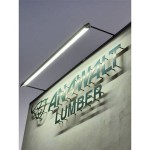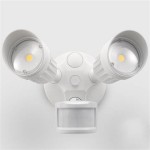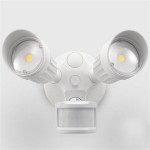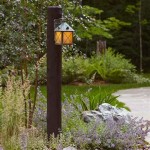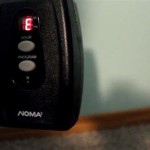Outdoor Light Sensor Problems
Outdoor light sensors offer convenience and energy efficiency by automatically switching lights on at dusk and off at dawn. However, these devices are susceptible to various malfunctions that can disrupt their operation. Understanding common problems and their potential solutions can help maintain a properly functioning outdoor lighting system.
1. Light Stays On Continuously
One of the most frequent issues with outdoor light sensors is the light remaining on during daylight hours. This can stem from several causes. Obstructions blocking the sensor's "eye" are a common culprit. Overhanging branches, accumulated dirt, or even the positioning of the light fixture itself can prevent the sensor from accurately detecting ambient light levels. A malfunctioning photocell within the sensor can also lead to this problem. The photocell is responsible for measuring light, and if it fails, the sensor may incorrectly perceive darkness, causing the light to remain on. Wiring issues, such as loose connections or damaged wires, can also disrupt the sensor's operation and cause the light to stay on continuously.
2. Light Doesn't Turn On at Night
Conversely, an outdoor light sensor might fail to activate at night. Similar to the previous issue, obstructions can interfere with the sensor's ability to detect darkness. If the sensor is positioned too close to another light source, such as a streetlight or a neighbor's security light, it may be "tricked" into thinking it's still daytime. A burned-out bulb is another simple, yet often overlooked, reason for a light not turning on. Finally, a faulty sensor, including internal component failure, can prevent the light from activating at night.
3. Light Flickers or Cycles On and Off
A flickering or cycling light points to a different set of problems. Loose wiring connections are a primary suspect. Vibrations from wind or other environmental factors can loosen connections over time, leading to intermittent power supply to the light. A failing photocell within the sensor can also cause flickering as its sensitivity degrades. In some cases, the sensor's sensitivity setting may be too high, causing it to react to minor changes in light levels, such as passing car headlights or shadows, resulting in the light turning on and off unnecessarily.
4. Sensor Sensitivity Issues
Problems with sensor sensitivity can manifest in various ways. If the light turns on too early or stays on too late, the sensor may be too sensitive. Conversely, if the light doesn't turn on until it's very dark or turns off too early in the morning, the sensitivity may be set too low. Many sensors have adjustable sensitivity settings, allowing for customization based on the specific lighting needs and surrounding environment. Incorrectly configured settings can lead to undesirable light activation patterns.
5. Bulb Incompatibility
While not directly a sensor issue, bulb incompatibility can create problems with sensor-controlled lights. Using a bulb with a wattage higher than the sensor's rating can overload the circuit and cause malfunctions. Some sensors are designed to work only with specific types of bulbs, such as incandescent or LED. Using an incompatible bulb type can lead to erratic behavior or prevent the light from working altogether. It's crucial to check the sensor's specifications and ensure compatibility with the chosen bulb.
6. Environmental Factors
External environmental factors can also affect sensor operation. Extreme temperatures, especially excessive heat or cold, can impact the sensor's internal components and lead to malfunctions. Moisture and humidity can also cause corrosion and damage to the sensor, especially in coastal areas or regions with high rainfall. Accumulation of dust, dirt, insects, and spiderwebs can obstruct the sensor's "eye" and interfere with its ability to detect light levels accurately.
7. Age and Wear
Like any electronic device, outdoor light sensors have a limited lifespan. Over time, components can degrade and fail due to normal wear and tear. Exposure to the elements further accelerates this process. If a sensor is several years old and experiencing persistent issues, it may simply be reaching the end of its useful life and require replacement.

Motion Sensor Lights Tips To Reset Detector

How To Troubleshoot Motion Detector Lights Solutions For Every Problem

How To Troubleshoot Motion Detector Lights Solutions For Every Problem

A Short Guide To Fixing And Replacing Faulty Motion Sensor Lights

Light Sensor Test Trouble Shooting

How To Reset A Stuck Motion Sensor Light Mr Electric

How To Troubleshoot Motion Detector Lights Solutions For Every Problem

Motion Sensor Lights Are They Worth It Air Conditioning Repair For Huntsville Madison Al Hvac Tips

Landscape Lights Not Working Solutions To 7 Common Problems

Why Won T My Outdoor Security Light Turn Off Lighting
Related Posts



